Open Architecture Micro Cars
In the mid 20th century – the early days of technology – computers were huge, expensive and proprietary, dominated by five global companies. Then the PC came along. It used open architecture in which specialist companies made high volumes of interchangeable parts. Where a mainframe could cost $1 million, a PC cost $1 thousand. That revolution happened began in the USA.
In the 21st century, another behemoth industry is experiencing the same change, this time coming out of China. Whereas large car companies turn out expensive motor vehicles using their own branded and expensive components, in China specialist companies are now producing open-architecture components which can be used to assemble microcars at costs comparable to personal computers.
Waiheke as the first MicroCar Zone
Proposal to Minister for Transport: use your power of permission. It costs nothing, but does a lot of good.
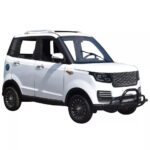
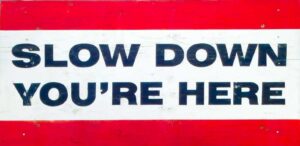
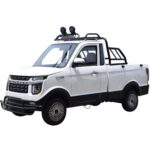
for 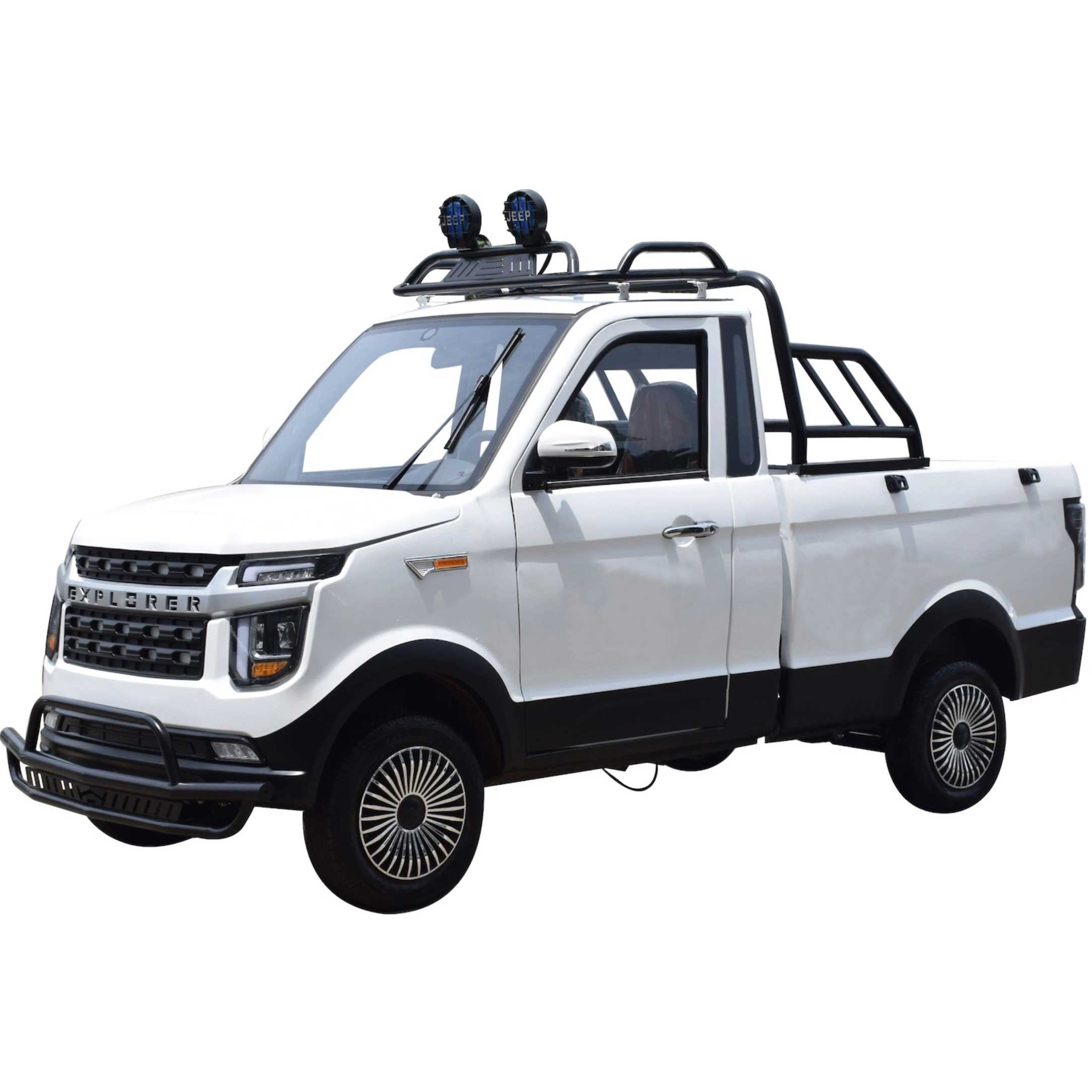
New Regulation
LF class: A moped with four wheels and electric motor with a maximum speed not exceeding 50km/h; only permitted to be used in lawfully established Local Traffic Zones (LTZ). Also called a micro-car, with a maximum curb weight not to exceed 500 kg, not including battery weight.
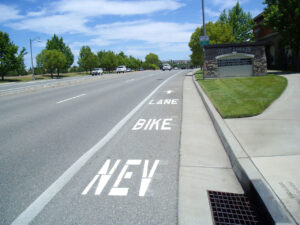
Waiheke Island: Local Transport Zone
LTZ: Local Traffic Zone where Class LF are permitted on road. Waiheke as the first LTZ.
- Speed limited to 50 km/h (factory-set by EV controller)
- Able to climb hills at speed limit (sufficient power)
- Not permitted on ferry (except on trailer/tow truck)
- Possibly include Great Barrier Island in the first LTZ
Micro Cars (LSEV – Low Speed Electric Vehicles)
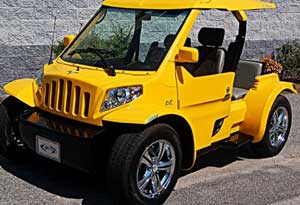
USA
In America, they are called Neighborhood Electric Vehicles (NEV) and Low Speed Vehicle (LSV) and they are legal on public streets
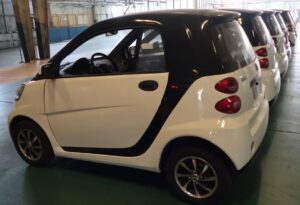
China
China is the largest manufacturer of micro-cars, using its efficiencies of scale to price them as low as NZ$4,000, landed and ready to roll.
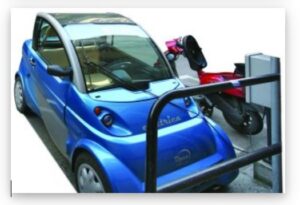
Italy
Micro-cars have been in Italy seemingly forever, and are not only seen in rural areas, but increasingly in historico central urban centres
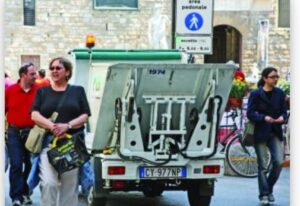
Utility
Micro cars are not only for people. Small electric vehicles are used in historic zones where streets are narrow and speeds limited.
Regulation
What needs to happen
Two acts by government – one essential, the other desirable:
- Essential: MOT to adopt a new class of motor vehicle to permit import and registration of 4-wheel mopeds
- Desirable: MOT/NZTA to adopt a new road zone class: local transport zones 4-wheel mopeds are permitted on public roads. Designate Waiheke a LTZ
Why?
New Class: NZ/A has committed to electric vehicles and offers a $8,625 rebate on a new class MA, MB or MC electric vehicle. But with the cheapest new EV over $40,000, this scheme caters to middle-class earners with sufficient income to finance a new car. Further, unlike ICE (internal combustion engine) vehicles, EVs age badly. When the battery range drops, it is not cost effective to replace it. While working class and beneficiaries typically purchase older cars – say 20 years old – EVs will be dead by that time.
In contrast, new 4-wheel micro cars limited in speed to 50 km/h cost a tenth the price of class MA EV ($4,000 on road, finance about $40/week over 36 months*). This makes them affordable by everyone. And if the government decided to keep the new EV car rebate – it is larger than the on-road price of a proposed class LF 4-wheel moped. It would be cheaper to provide a 100% subsidy on a microcar than the current $8,625 subsidy on a class MA EV. And for people who live in low-speed transport zones, such as Waiheke Island, there is no need for a vehicle designed for 100 km/h speeds or 300 km driving ranges.
Further some microcars run on conventional lead-acid batteries, and there is technology in NZ/A (but not active) that can refurbish lead/acid batteries for longer-term use. This means used LF microcars could have long lives, which offers a more sustainable footprint than a 10-year life span MA-EV.
New Local Zones: When a road is engineered for high-speed driving (60 – 100 km/h), some vehicles will drive that speed regardless of the posted speed limit. In NZ/A many such roads are the only way to get around. A small vehicle controller-limited to 50 km/h on a 100 km/h road is at risk of being struck, and is more likely to induce road rage by the faster vehicle. Further, a vehicle designed for 50 km/h will not have the same crash protection as one designed for double or triple that speed.
Overseas, the answer is to designate specific roads as micro-car permitted, something that could be rolled out in NZ/A. However, there is one location that is easier to implement the first local transport zone: Waiheke Island (and possibly Great Barrier Island).
Except for the 60 km/h Onetangi Straight (1.6 km), all roads are already 50 km/h or less. Because it is an island, controls are simple: Do not allow microcars on the car ferry except on a trailer or tow truck. This keeps them on Waiheke.
The benefits are more than lowering the carbon footprint. Waiheke roads are narrow and it is not cost-effective to widen them to national standards. Microcars are narrower and smaller, thus they take up a smaller physical footprint on the narrow road. At the ferry terminal, where parking is insufficient, microcar parking allows more vehicles without claiming more real estate.
Microcars are also much simpler, offering the opportunity for local folks to develop a local microcar industry – not requiring a billion dollar corporation to develop.
* regarding price, by the time add-ons are built in, the final price can be double, but still should be lower than the $8,625 EV subsidy. The core message here is a new LSEV (Low Speed Electric Vehicle) that is affordable by everyone, including those on the benefit, pension or as a first vehicle for a young person.
THE LAW
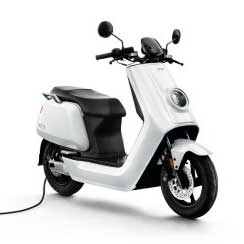
CURRENT: Class LA – e-Moped with Two Wheels
Class LA ‘Moped’ means a motor vehicle (other than a power-assisted pedal cycle) that has— (a) 2 wheels; and (b) a maximum speed not exceeding 50 kilometres per hour; and (c) (ii) a power source other than a piston engine
Class LA mopeds must meet requirements of vehicle classes LA Aren’t required to be regularly inspected for a WoF. Riders can hold any New Zealand driver licence (eg car driver licence) to ride a moped. Must wear an approved helmet.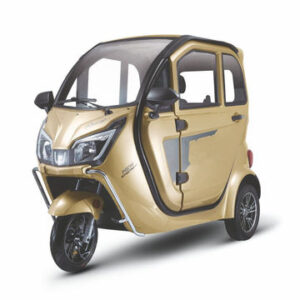
CURRENT: Class LB – e-Moped with Three Wheels
Class LB ‘Moped’ means a motor vehicle (other than a power-assisted pedal cycle) that has— (a) 3 wheels; and (b) a maximum speed not exceeding 50 kilometres per hour; and (c) (ii) a power source other than a piston engine
Class LB mopeds must meet requirements of vehicle classes LB Aren’t required to be regularly inspected for a WoF. Riders can hold any New Zealand driver licence (eg car driver licence) to ride a moped. Must wear an approved helmet.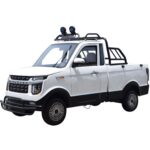
PROPOSED: Class LF – e-Moped with Four Wheels (Micro-car)
Class LF ‘Moped’ means a motor vehicle (other than a power-assisted pedal cycle) that has— (a) 4 wheels; and (b) a maximum speed not exceeding 50 kilometres per hour; and (c) (ii) a power source other than a piston engine
Class LF mopeds must meet requirements of vehicle classes LF Aren’t required to be regularly inspected for a WoF. Riders can hold any New Zealand driver licence (eg car driver licence) to ride a moped. An approved helmet is not required, but all occupants must wear shoulder/lap belts when in motion Must have:- at least two high/low dipped-beam headlamps suitable for driving on the left side of the road
- headlamps must illuminate the road in front for at least 30 metres
- at least two brake lights on either side and one higher middle brake light
- at least two red rear facing lamps that can be seen from 100 metres away when turned on
- electric turn signals with front and rear facing lamps
- speedometer
- windscreen and windscreen wiper
- rear registration plate lamp
- at least two rear reflectors that can be seen from 100 metres away when light shines on it
- at least two rear view mirrors, including one on each door that gives a clear view behind the vehicle
- good quality tyres. Tread pattern clearly visible across at least 3/4 of tread width around entire circumference
- a horn that can be heard by other road users from at least 100 metres away (in normal traffic conditions)
- mudguards
- lap/shoulder seat belts to Land Transport Rule: Seatbelts and Seatbelt Anchorages 2002
- motor controller set to not exceed 50 k/hr
- sufficient power to go up any incline at the posted speed limit for that incline when fully loaded*
- not permitted to be driven on footpaths or cycle lanes unless specifically signposted
- not to exceed 500 kg maximum curb weight not including battery weight
PROPOSED: Local Transport Zones
Class LF vehicles are only permitted to be driven in designated local transport zones (LTZ). The first LTZ to be established concurrent with adoption of Class LF is the whole of Waiheke Island (and possibly Great Barrier Island). Class LF vehicles are not permitted to be driven on the ferry boats except on a trailer or tow truck. Future LTZ may be designed by territorial authorities and NZTA.White Paper (click here for pdf)
Making Microcars on-road legal in Local Transport Areas
Summary
- Cars (what NZTA calls Class MA) are designed to safely travel at speeds in excess of 100 km/h. That safety, performance and comfort comes with a huge economic, social and environmental cost. Cars are designed for high-speed roads. For travel in slow, local transport areas (LTA), cars are overkill – a waste of money and resources with an unnecessarily large footprint. For LTA, new, market-disruptive technology is emerging – new-tech that unfortunately is locked out of NZ by out-dated law & regs.
- Today, a major new microcar industry is emerging in China. The car industry is experiencing the motor vehicle equivalent of the personal computer. To explain: In the 1960’s main-frame computers were internal architecture in which all components were proprietary to five major corporations – the equivalent of Toyota, Ford, BMW, Tesla, etc., today. Then in the 1970’s the PC emerged using open architecture in which specialist companies made high volumes of interchangeable parts. Where a mainframe could cost $1 million, a PC cost $1 thousand. What PC’s were to main frames, microcars are to the big-car industry – a market-disruptive shift in technology.
- These new electric motor vehicles are solely designed for local transport areas. They are small, low top-speed (50 km/h) and extremely inexpensive (NZ$4,000 landed) with impressive options due to China’s economy of scale. China makes over 2 million microcars per year, with over 10 million on its roads. Microcars are perfect for LTAs.
- However, the Land Transport Act 1998 is out of date. It is missing one number: “4” that would enable NZTA to develop regulations allowing 4-wheel microcar for use in LTAs. The Act defines a moped as a motor vehicle that has 2 or 3 wheels; and a maximum speed not exceeding 50 kilometres per hour. If the Act was amended to say 2, 3 or 4 wheels, this would enable NZTA to be responsive without the gyrations required to issue exemptions as it did for NZ Post with its 4-wheel moped, the Paxter.
- This paper first seeks to make officials aware of this new technology that can be an important tool in fighting climate change, socio/economic polarisation and traffic congestion. It then proposes changing the rules to allow microcars in these LTAs.
Proposal
- That the Minister and/or the Executive Council determine if an Order in Council, or amendment to the Land Transport Act 1998 Part 1(2)(1) Interpretation is required to enable NZTA to develop regulations permitting 4-wheel mopeds (also known as microcars, quadricycles and low speed electric vehicles – LSEV) on NZ roads.
- That NZTA designate local transport areas in which microcars (4-wheel mopeds) are permitted to operate on public roads under similar rules to 2/3 wheel mopeds, except instead of motorcycle helmets, 4-wheel have passive safety equipment including seat belts, windscreen and car-type controls such as a steering wheel and foot brakes.
- That the first local transport area is the whole of Waiheke Island – allowing NZTA time to develop rules for mainland communities where local roads connect to regional roads – unlike Waiheke where all roads are slow and local, with only ferry linkage.
Terms
- Microcar: The technical term is Low Speed Electric Vehicle (LSEV) but LSEV is a mouthful. Also known as quadricycles, 4-wheel mopeds, neighbourhood electric vehicles, the simplest term, to be used herein is Microcar (limited herein to electric powered). A microcar weighs less than 500 kg (excluding battery weight), has four wheels and is designed to be safe at speeds up to 50 km/h – and is set at the factory with a speed limiter so it cannot exceed 50 km/h. An example of a microcar already on NZ roads is the NZ Post Paxter that is permitted by NZTA special exemption.
- Local Transport Area (LTA): Common localities limited to 50 km/h (or less) roads with no high-speed roads encroaching into the common locality.
Principle of Governance
- The most effective power of Government is the power of permission. Granting permission unleashes private initiative without cost to the taxpayer. Technology constantly evolves, giving people and communities new possibilities, but too often government regulation lags behind – rules become part of the problem. To avoid this, making government responsive to new technology becomes a paramount role of government and a duty of elected representatives to prod ministry officials into action.
- climate change & local/regional pollution,
- affordable cost of living for struggling Kiwis
- urban traffic congestion.
Context
- NZ is polarising into two classes – the comfortable class and the struggling class. These classes are not defined by 20th political affiliations. Both the left and right political wings are, by their salaries, of the comfortable class, whereas the struggling class is too busy trying to get by to have time or interest in political identity.
- Laws and regulations are made by the comfortable class who seem oblivious to the challenges facing the struggling class. The struggling class buys 20-year old cars. But as NZ shifts to EV’s, when the battery wears out at 10-years, that older car will be scrapped. The clean car rebate is a scheme by and for the comfortable class, but the trickle-down of old cars to serve the struggling class becomes collateral damage.
- The top contributor to CO₂ pollution (47%) is the Resource Management Act 1991. This is because every district/unitary plan in NZ is based on the American post-war zoning model in which homes are in one zone, with work, shops, schools and services in other zones. To accomplish the mundane chores of daily life, people must drive.
- The answer ultimately it is to build new self-contained communities in which all day-to-day destinations are within walking distance. Indeed, in 2023, there should be no new developments that are transport based – be it car, bus or train.
- However, there are many communities that have local transport areas, meaning day-to-day access is on local roads with a 50km/h (or lower) speed limit. These local transport areas do not need $40,000 EV’s with its $8,625 new-car rebate. They are perfect for $4,000 microcars that can be afforded by the struggling class. Indeed, the new-car rebate is higher than the total on-road purchase cost of a new EV microcar.
- Waiheke Island is a pure LTA. It also is an environmental leader – first to bring in 2nd generation ebikes and first to promote modern EV’s. It’s ideal for the first LTA.
Need
- “Cars turn towns into mincemeat”, wrote A Pattern Language author Christopher Alexander. Cars have a huge physical, social and environmental footprint appropriate for high-speed driving, but overkill for local transport areas (like Waiheke Island).
- Cars (NZTA Class MA) cost tens of thousands to buy, consume substantial resources to make and run, with a large physical footprint and dominate due to mega-car-company lobbying power. Cars have their place, but not in local transport areas.
- EV’s are not the answer. With big batteries for long range and safety designs for 100+ km/h crashes, they eliminate tailpipe emissions, but not the other damage. Worse, while ICE cars have long lives (average in NZ is over 14 years, making older used cars affordable by the bottom half of NZ society), when the EV battery fails after 10 years or less, the car is scrapped, thus further squeezing struggling Kiwis.
- New EVs cost too much for struggling Kiwis. The $8,625 rebate (subsidising middle-class, new-car buyers) is higher than the total cost of a microcar, landed in NZ. Brand new, impressively-featured microcars can be purchased off Alibaba for US$2,000. Put another way, if the rebate was spent on a microcar, it would pay for the microcar with cash left over. This means EVs for everyone, not just the comfortable class.
- Microcars make roads “bigger”. Two can be parked in a single parking bay. Their on-road footprint is smaller, thus using less of the road. In places like Waiheke this is important as road-widening is not a realistic option. It could double the ferry carpark capacity with no new land set aside for parking – just paint shorter, narrower lines.
Order in Council or Amendment to the Act?
- If Order in Council and legislative amendment were equally easy, amend the Land Transport Act 1998 Part 1(2)(1) Interpretation moped to include 4 wheels as in:
- However, legislative amendments are not as easy as Order in Council, thus when NZ Post sought to make its microcars (brand name Paxter) legal on NZ roads, it secured a NZTA exemption. The Paxter exemption given would not fit well with the microcar proposal because it included permitting driving on footpaths (appropriate for Posties, but not for everyone) and required motorcycle helmets for drivers. Helmets make no sense when a low speed vehicle has approved seat belts and the physical crash protection of a car body. Seat belts hold the occupants in place, thus the extra 1 kg weight of the helmet creates higher incidence of neck injury because of its inertia. Microcars in slow-speed crashes offer more protection to the rider and passenger of a 2-wheeled moped. Also the Paxter has a motorcycle-type steering system. Today’s Chinese microcars use conventional steering wheels and car-type controls.
Regulation
- Once the enabling legislation or Order in Council is sorted to permit microcars use in LTAs, regulations will be needed to ensure the actual designs that are imported are safe on 50 km/h LTA roads. As was seen when Lime e-scooters first came into NZ, there were problems with brakes that caused injuries and ACC claims. This can be easily addressed by clearly setting out NZ standards that must be met for a microcar to pass the border check, with NZS provided to the China factories to ensure vehicles safe for NZ roads. Given the price, all imported microcars are expected to be new.
- Power: The current rule for 2/3 wheel electric mopeds sets no power limit, only a maximum allowable speed. The same should apply to 4-wheel moped/microcars. A power limit, such as the 1,500W for mobility scooters, or the 300W for ebikes, clearly was set by a person with little understanding of electrical engineering. Wattage varies constantly, and power caps discriminate against heavy people and tradies carrying tools and supplies. The much simpler regulation – easily enforceable – is to require the controller is set to cut off at 50 km/h. It’s simple and effective.
- Speed: Further, the motor should be sufficiently powerful to enable the microcar to maintain the posted speed limit even going up steep hills (16%). If a road has a posted speed of 50 km/h and a microcar slows down to 35 km/h, drivers stuck behind seek to overtake, creating a dangerous situation. The standard should not define wattage, but require the manufacture certify the microcar can maintain 50 km/h on a 16% grade.
- WOF: 2 & 3-wheel mopeds are not subject to WOF. 4-wheel should be the same. A WOF inspection is appropriate for high-speed vehicles, where an unsafe car can have catastrophic outcomes, but not for vehicles speed-limited to 50 km/h. While the comfortable class can afford a $75 WOF fee, for the struggling Kiwi, a $75 fee adds one more burden to their struggle to keep food on the table and the lights on.
Recommended Standards
- NZTA sets standards for two and three wheeled mopeds. Similar standards should be set for 4-wheelers. Already, most of these features are on even the lowest-cost microcars. Minimum standards should include:
- motor controller set to not exceed 50 km/h (cuts off power at 51 km/h)
- sufficient power to go up a 16% incline at 50 km/h when fully loaded
- not permitted to be driven on footpaths or cycle lanes unless signposted
- not to exceed 500 kg maximum curb weight excluding battery weight
- note: permit weight limit to be increased by NZTA as technology advances
- two dipped-beam headlamps suitable for driving on left side of the road
- headlamps must illuminate the road in front for at least 30 metres
- two brake lights on either side and one higher middle brake light
- two red rear facing lamps that can be seen from 100 metres away when turned on
- electric turn signals with front and rear facing lamps
- speedometer in km/h
- windscreen and windscreen wiper
- rear registration plate lamp
- two rear reflectors that can be seen from 100 metres away when light shines on it
- two rear view mirrors, each of which gives a clear view behind the vehicle
- good quality tyres and protective mudguards
- horn can be heard by other road users 100 m. away (in normal traffic condition)
- lap/shoulder seat belts to Land Transport Rule approved standard
Relation to government priorities
- This proposed policy is consistent with the
- Zero Carbon amendment to the Climate Change Response Act 2019;
- Government concern with rising cost of living (especially local transport);
- Concern about urban traffic congestion (too many cars, not enough roads);
- Evidence showing Class MA EVs have a significant adverse environmental footprint due to the resources required to manufacture their components.
Links
- NZ Post Exemption MRE16.25306081 https://fyi.org.nz/request/5516/response/18547/attach/5/NZTA%20Exemption%20Letter.pdf
- Article on Chinese Microcars https://www.theautopian.com/a-deep-dive-on-the-changli-and-similar-cheap-cars-like-it/